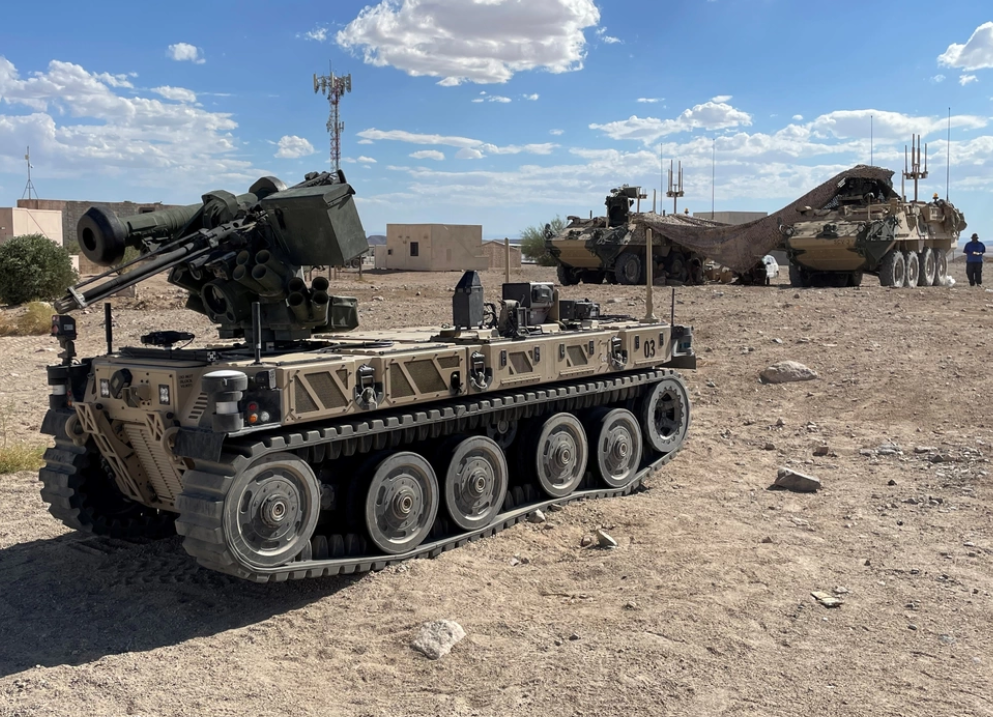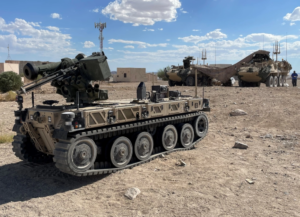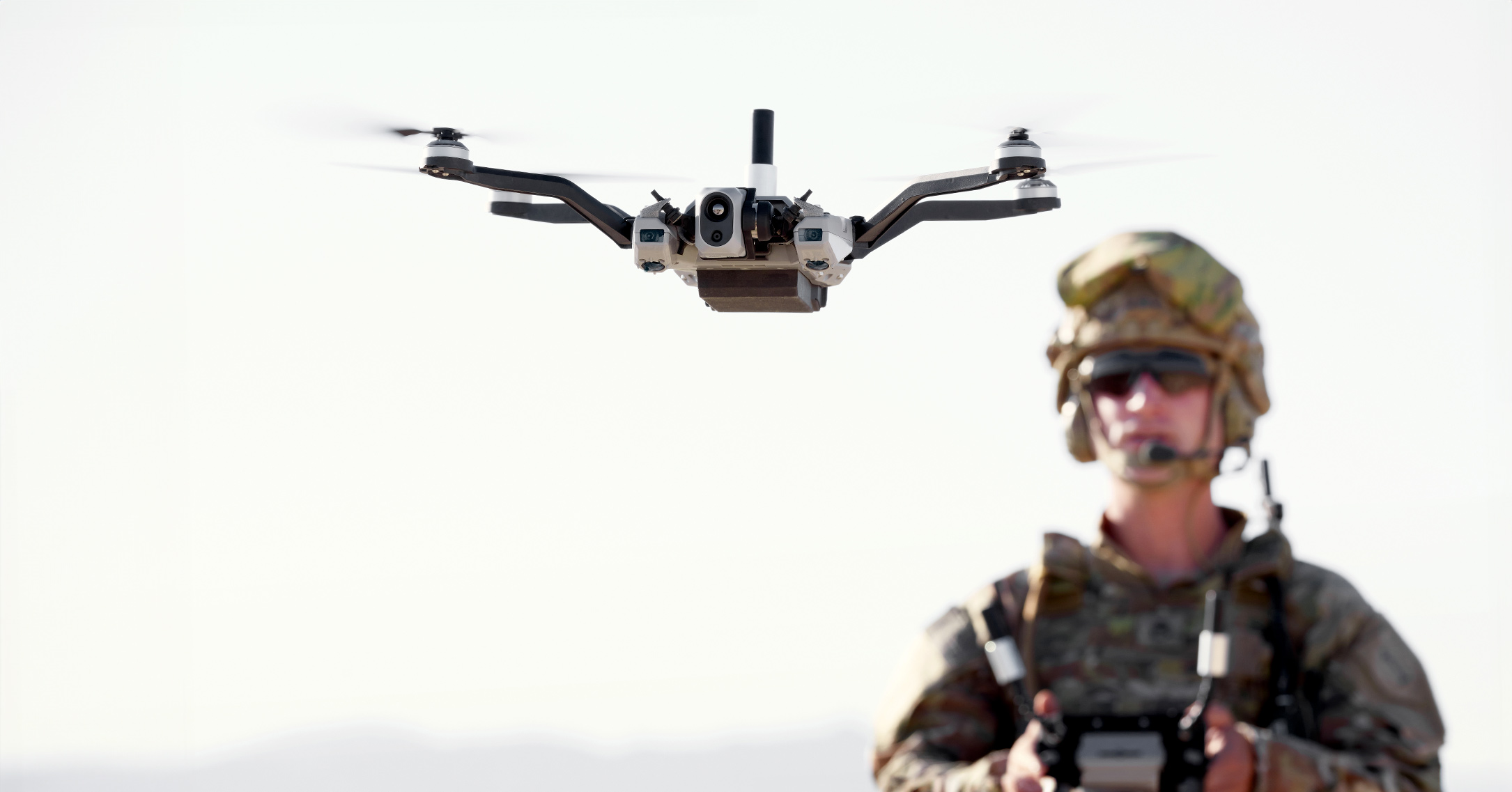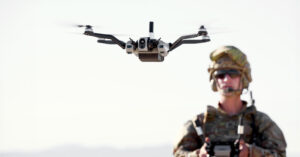FMD + Hyundai. Fairbanks Morse Defense (FMD) signed a Memorandum of Understanding (MoU) with South Korea’s HD Hyundai Heavy Industries this month to explore opportunities to collaborate of future international Navy initiatives. The MoU signing occurred during the annual Sea-Air-Space expo on April 8. Given both the Navy and the Trump White House are pushing measures to improve domestic shipbuilding and connect international companies with domestic U.S. work, “This MoU allows both our companies to explore avenues that drive mutual growth while still supporting our national manufacturing and maritime defense priorities,” FMD CEO George Whittier said in a statement.
SecNav To New Carriers.
Newly minted Secretary of the Navy John Phelan recently visited both the USS Gerald R. Ford (CVN-78) and the future USS John F. Kennedy (CVN-79). Phelan embarked on CVN-78 to observe Carrier Strike Group 12’s Composite Training Unit Exercise (COMPTUEX) from April 10-11, his first visit on an operational CSG since being confirmed. On April 16 Phelan then visited the second Ford-class carrier, CVN-79, at HII’s Newport News Shipbuilding shipyard in Virginia. The second visit included an overview of ship construction and an engagement with the ship’s crew.
Navy UnderSec. Secretary of the Navy John Phelan on April 15 announced he tapped civil servant Brett Seidle to perform the duties of under secretary, replacing the retiring Victor Minella in that role. Seidle currently serves as the acting Assistant Secretary of the Navy for Research, Development and Acquisition (ASN-RDA). Minella has served in various positions at the Navy since 1987 and has performed the duties of acting under secretary since Jan. 22. In February President Trump nominated former Navy captain and Virginia senate candidate Hung Cao to serve as under secretary, but it is unclear when the Senate will vote on his confirmation.
T-ATS 12. Shipbuilder Austal USA and the Navy marked the start of construction with a keel laying ceremony for the future USNS Solomon Atkinson (T-ATS 12) Navajo-class towing, salvage and rescue ship on April 16. T-ATS 12 will be the seventh ship in its class and the second of five construction contracts awarded to Austal for the T-ATS vessels. The company is building the ships at its Mobile, Ala., shipyard.
SSBN-826 Propeller. The Navy this month announced the Navy’s Naval Foundry and Propeller Center (NFPC) delivered the final major propulsor component for the future USS District of Columbia (SSBN 826) to General Dynamics-Electric Boat on April 8. SSBN-826 is the under-construction first Columbia-class ballistic missile submarine. Electric Boat accepted the component in Philadelphia, Pa., and brought it to their Groton, Conn., shipyard on April 10. NFPC has been working on the propulsor patterns, models and castings for years before the boat started construction in 2022. The Navy argued this work has pushed engineering innovation to “new heights, resulting in multiple record-breaking pours for nonferrous castings in the U.S. The largest casting was over 260,000 pounds and is already at Electric Boat for installation. NFPC has produced four components for SSBN-826, which will be transported to Groton, where Electric Boat is responsible for final assembly of all of the Columbia-class submarines.
Medium Icebreaker News. The Coast Guard earlier this month asked for information on the Arctic Security Cutter (ASC) to bolster its awareness of the domestic and international maritime industrial bases that have “existing icebreaking capable vessel designs that are ready for construction or already in production.” The April 11 Request for Information for the ASC, which would be a medium polar icebreaker to complement the Coast Guard’s heavy Polar Security Cutter (PSC), suggests the Coast Guard would like the vessel in relatively short order, “within THIRTY-SIX (36) months of a contract award date.” Bollinger Shipyards recently received a nearly $1 billion contract modification to complete design and construction of the first PSC, which will be delivered in 2030, six years later than originally planned.
…Parameters. The RFI said preliminary ASC capability parameters include a length of 360-feet or less, a beam of 78-feet or less, and a draft of 23-feet or less. The Coast Guard wants a vessel with a 6,500 nautical mile range at 12 knots and 60 days of endurance, the capability to break ice three-feet thick at three knots, and a flight deck and hangar to accommodate one HH-60 helicopter. And given the dearth of polar icebreaking know-how among U.S. shipyards, the service said it wants to learn about “the current capability and availability of global shipyards that could support the construction and subsequent launch of an existing icebreaking capable design” in three years. Responses are due by April 25. The Coast Guard has said it wants a mix of eight or nine medium and heavy polar icebreakers.
…Polar Star Refresh. The Polar Star, the Coast Guard’s sole operating heavy polar icebreaker, on March 30 arrived at Mare Island Dry Dock in California to begin the fifth of five planned phases of its service life extension program (SLEP), the service said last week. The final phase of the SLEP will have the refurbishment of heating, ventilation and air conditioning systems in two remaining zones, recapitalization of the gyro repeater to update to modern standards for safe navigation, and replacement of main propulsion and auxiliary systems with modern units. Sewage pumps and tank level indictors will also be recapitalized. The nearly 50-year-old cutter recently completed its annual mission to Antarctica to break ice so resupply vessels could reach a scientific station. The goal of the SLEP program has been to keep the Polar Star operational until the PSC fleet comes on line.
New Space Plant. Safran Defense & Space, Inc. this month opened a new 28,000 square foot facility in Parker, Colo., near Denver to serve as a hub for manufacturing the EPS X00 space electric propulsion systems for Defense Department and commercial customers. Shipments will begin in 2026. The plant will also be a hub of expertise for satellite communications, and space and ground domain awareness. Safran operates an antenna network for its WeTrack space surveillance service.
XR for Maintenance. Gecko Robotics and L3Harris Technologies have partnered to bring an extended reality (XR) technology for remote aircraft inspection for military and industry customers. Pittsburgh-based Gecko’s XR capability captures thousands of high-definition images of an aircraft’s surface to create a precise 3D model of the plane’s physical characteristics, providing a “digital twin” of the structure. The model allows inspectors to remotely assess a plane’s health without sending a full crew for an onsite inspection, saving costs. The companies have been doing prototype testing with the technology for the past year.
GA-ASI Tech Investments. General Atomics Aeronautical Systems, Inc. (GA-ASI) last week said it is investing in two Dutch companies, Emergent Swarm Solutions and Saluqi Motors. The investments grew out of the inaugural Blue Magic Netherlands event last November that was hosted by the San Diego-based company and Dutch government near Eindhoven to foster innovation in the Netherlands industrial ecosystem. Emergent is developing software for autonomous flight and intelligent swarming of unmanned systems. GA-ASI said its partnership with Emergent will develop autonomy skills for its own drones. Saluqi makes high-density, high-performance motors that GA-ASI will help qualify for aerospace applications.
Bones in Japan. U.S. Air Force B-1Bs from the 9th Expeditionary Bomb Squadron at Dyess AFB, Texas have deployed to Misawa Air Base Japan as part of a Bomber Task Force mission in support of Pacific Air Forces’ (PACAF) training with allies to bolster deterrence, PACAF said. “These deployments continue the enduring security cooperation with Japan and support our combined capability to quickly and decisively respond to any challenge presented in the Indo-Pacific,” according to PACAF.
Reaper Crash Report. Air Combat Command at Joint Base Langley-Eustis, Va., has released an Abbreviated Accident Investigation Board (AAIB) report on the Nov. 29, 2023 crash of an MQ-9 Reaper deployed with Air Force Special Operations Command’s 12th Expeditionary Special Operations Squadron in the U.S. Africa Command (AFRICOM) area of responsibility. The drone, made by General Atomics and operated by the 432nd Wing at Creech AFB, Nev., lost fuel flow to the engine and hit the ground 44 seconds after takeoff—a crash with an AAIB estimated loss of more than $21 million for the drone and its equipment. The cause “was an undetermined mechanical failure within the fuel control unit,” the report said. General Atomics “considered six potential causes, eliminating four, but was unable to determine a single root cause between a possible P3 line or torque motor failure,” according to the AAIB. The Air Force Judge Advocate General has issued eight MQ-9A accident reports—four in the AFRICOM AOR–since the start of 2023.
Two Percent Pass. Rep. Andy Barr (R-Ky.) on Thursday introduced H.R. 2924, a bill to allow Secretary of State Marco Rubio to discontinue visas for “foreign nationals” in NATO countries that do not spend at least two percent of their Gross Domestic Product (GDP) on defense. 23 of 32 NATO countries have met that benchmark, which NATO set in 2014. Secretary of Defense Pete Hegseth said in February that NATO’s current burden sharing goal for member nations to spend two percent of GDP on defense is “a start, as President Trump has said, but it’s not enough,” adding that the U.S.’ current mark of around 3.4 percent of GDP is a “very robust investment.” Trump and congressional Republicans are backing a NATO burden sharing increase to five percent of GDP. Countries not hitting the current two percent minimum include Canada, Spain, Portugal, Italy, Belgium, Luxembourg, Croatia, and Slovenia. Iceland has no standing military but helps fund NATO and has a 1951 agreement with the U.S. for the country’s defense.
Army Cloud. Oracle has been selected to provide cloud computing and storage services for the Army’s Enterprise Cloud Management Agency (ECMA), the company said on April 15. The award was made as a task order under the Pentagon’s potential $9 billion Joint Warfighting Cloud Capability (JWCC) contract. “Building on the DoD’s largest competitive JWCC award in 2024, this new task order will help advance the ECMA’s mission to deliver and manage a secure, multi-cloud ecosystem in support of the Army Digital Transformation Strategy. In addition, by expanding ECMA’s catalog of cloud capabilities, the new task order will enable Army customers to further innovate across all operational domains,” Oracle said in a statement.
Launched Effects. The total contract award value for the three vendors selected to participate in the Army’s Launched Effects-Short Range (LE-SR) special user demonstration is approximately $26.8 million, a spokesperson for Program Executive Office Aviation confirmed to Defense Daily. The spokesperson noted that individual vendor funding “has not been allocated yet.” The Army in March selected AEVEX Aerospace’s Atlas, Anduril Industries’ Altius 600 and RTX’s Coyote for the LE-SR special user demo, which is intended to inform future prototyping and procurement plans. “The period of performance for this special user demo is 18 months, which includes a New Equipment Training (NET), an Operational NET and a culminating event,” the spokesperson said. Launched Effects is the Army’s program to field new autonomous air vehicles that can be launched from aircraft or ground platforms with a variety of payloads and mission system applications to provide a range of effects for reconnaissance, extended communications links and eventually lethal capabilities.
Burn n’ Go. The Defense Advanced Research Projects Agency in May plans to host a Proposers Day for a new program it calls Burn n’ Go (BnG) to develop a new solid rocket motor design where the thrust profile can be tailored after manufacturing to allow a single motor to be used across different weapon systems. DARPA also said that BnG will provide “new capabilities and applications, enabling flexible weapons procurement and large-scale production/stockpiling.” The agency said the program “will leverage materials science innovations that control the burn surface area post-production” and provide other benefits. In additional to materials science-based solutions that have shown promise, DARPA is open to other approaches for BnG, it said last week in a notice on Sam.gov. The Proposers Day is slated for May 8 in Arlington, Va.










